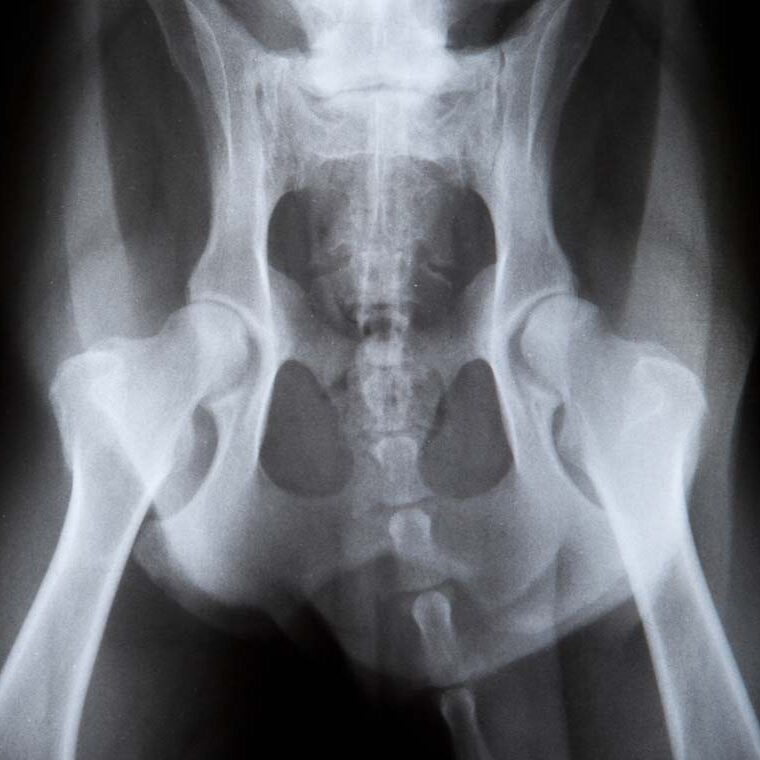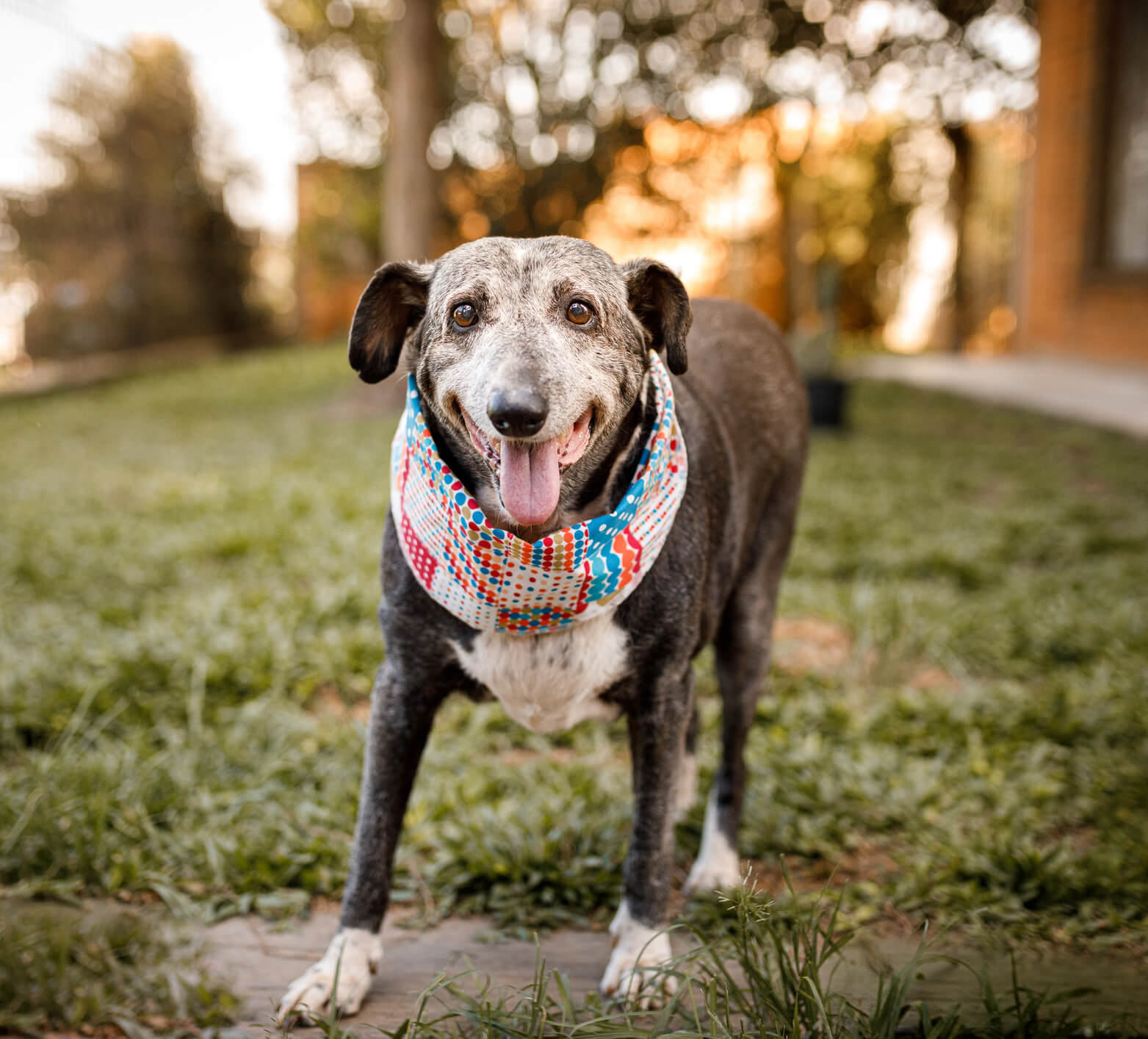What is Canine Hip Dysplasia?
Canine Hip Dysplasia is a condition in which the femoral head fits loosely into the hip socket, or acetabulum. This creates instability (“laxity”) in the hip joint, and creates an abnormal motion as the dog moves. This abnormal motion stretches the joint capsule and ligaments, producing pain and sometimes lameness. The acetabulum (hip socket) becomes deformed by the continual abnormal movement of the femoral head, causing further pain and lameness. Eventually osteoarthritis (degenerative joint disease) is formed, as the body tries to cope with the ongoing abnormality.
In affected dogs, hip dysplasia is usually present when the dog is immature. The causes of CHD are not completely understood, but are likely to be influenced by both heredity (breed, parents) and by environmental factors (diet, exercise). The osteoarthritis continues to progress and worsen over the life of the dog.

What Signs Will I See If My Dog has CHD?
The most typical presenting features of a dog with Hip Dysplasia are lameness and hip pain. The severity of the symptoms can be highly variable, ranging from subtle abnormalities in the dog’s stride pattern to more obvious signs such as stiffness and reluctance to exercise. Although the disease is present at birth, it may take several years for dogs to develop the clinical symptoms that prompt a visit to the veterinarian. However, young dogs with severe disease may become symptomatic within the first 6 months of their life.

What Are the Treatment Options at VMC?
Treatment options for Canine Hip Dysplasia depend on the dog’s age, size, and the severity of the dysplasia. The dog’s degree of discomfort as well as physical examination and radiographic findings are used to determine severity. Treatment options are also dependent upon the pet owner’s financial abilities and expectations for the dog (working dog or competition dog versus pet).
Treatment options include:
- Total Hip Replacement (THR)
- Triple Pelvic Osteotomy (TPO)
- Femoral Head Ostectomy (FHO)
- Conservative Treatment
- For more information about the specific treatment options at VMC, click here
What Are the Potential Complications of Surgery?
Any time an animal (or human) undergoes anesthesia there is the risk of adverse reactions to anesthesia, including death. Complications associated with surgery and anesthesia are uncommon at VMC, however. Our anesthetic protocols are constantly reevaluated to ensure we are current with the most modern, safest practices. Blood work and other diagnostic tests (if indicated) are performed prior to anesthesia to identify any underlying medical conditions. A licensed veterinary technician will be dedicated to monitoring your pet’s vital signs and condition for the entire surgical and anesthetic recovery period.
What Will the Recovery Process Be?
Surgical patients at VMC receive detailed personalized instructions regarding post-operative care at the time of discharge.
Regardless of the procedure your pet undergoes, your dog will require eight to twelve weeks of exercise restrictions. Failure to follow the instructions for exercise restriction detailed in the discharge instructions can result in severe complications, including complete failure of the surgical repair. To avoid complications and the potential for additional surgeries, you must follow our postoperative instructions conscientiously!
Appropriately guided physical rehabilitation is an essential part of a full recovery. A detailed program will be outlined for you and your pet that involves a gradual, controlled increase of flexibility and strengthening exercises. Most dogs are allowed to return to normal activity after 3-4 months, provided the bone has healed completely and muscles have been strengthened.
